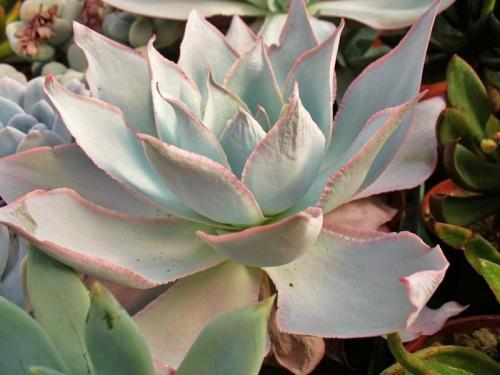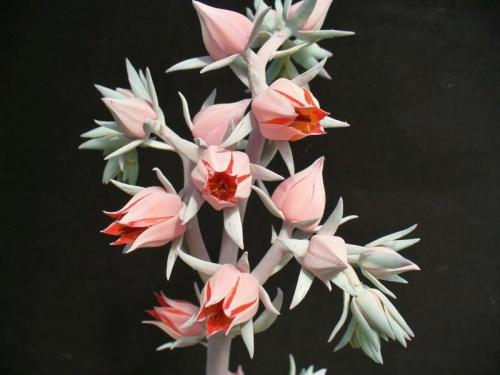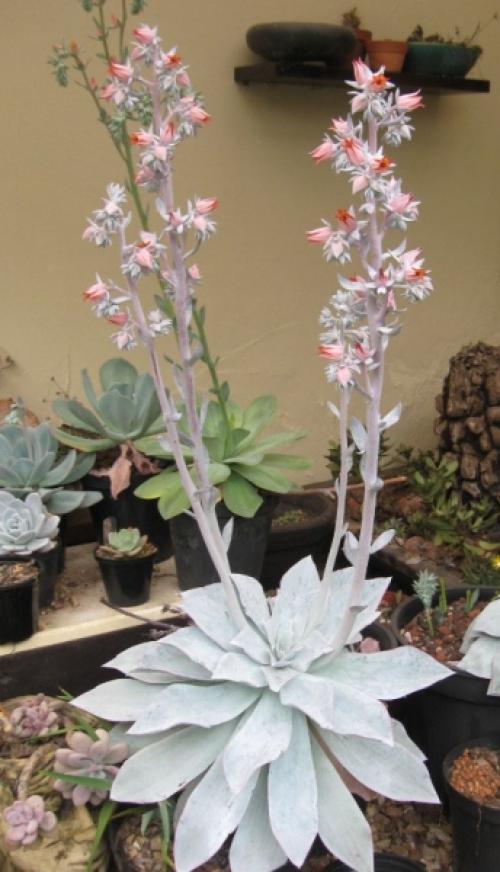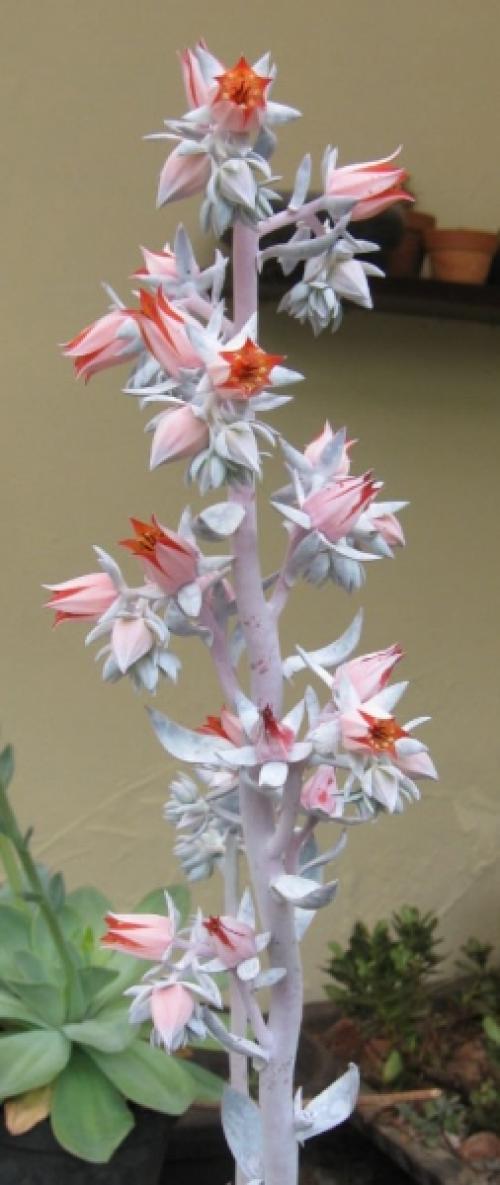CANTE Glass & Mendoza-Garcia, 1997 (engl./ fr.)
Series Gibbiflorae
Type : Gl. 8073, Mexico, Zacatecas, collected June 19, 1994, between Sombrerete and Fresnillo.
Etymology : Derived from Cante A.C., a supporting organization of Charles Glass' botanical work while he lived in San Miguel de Allende, Mexico. The name "cante" is in turn derived from the Pame-Chichimeca word meaning "the water that gives life" (according to the ISI text for the offering of E. cante in 2012).
Distribution : Mexico (Zacatecas).
First Description by Glass & Mendoza-García in Cactus and Succulent Journal US 69(5): 239 ff, 1997 :
Solitary, rosette sessile, 30 - 40 cm in diameter.
Leaves several, 35 - 50 or more in large, old specimens, densely crowded, 15 - 18.5 cm long, 6.5 - 7.5 cm wide, ca 3 cm wide at base, 10 mm thick at base, 6 mm thick above, rather flat to slightly concave above, not markedly channelled, slightly convex below, without keel, basal attachment ca 24 mm wide, leaves pale bluish-green tinged lavender, highly farinose, with a milky opalescent quality, with thin-edged, narrow, pink margins, sometimes with a slight pleat or marginal fold near the apex.
Inflorescence maturing in late summer, flowering stem laterally ascending, pruinose Mexican-red, usually solitary, occasionally 2 - 4, 45 - 60 cm long, ca 10 mm in diameter near the base, with about 5 branches 3 - 8 cm apart, each with 4 - 12 flowers, bracts 55, to 17 mm long, 4 - 10 mm wide, soon drying and falling, pedicels (2-) 4 - 17 mm long and 4 mm thick.
Flowers ca 23 mm long, sepals 10 - 15 mm long, 7 - 9 mm wide near base, pruinose grayish lavender, curved, ascending, corolla 10 - 15 mm in diameter near the base at broadest point, petals 20 mm long, 6 - 8 mm wide, slightly keeled, pruinose orange-pink outside, curving slightly outwards with an opening of 9 - 10 mm, 5 - 7 mm in diameter at waist, inner surface yellowish.
Cytology : n = 27
Link to a summary of the above description in English and French.
Note :
1. Until its description in 1997 this species has been in cultivation for decades under the name Echeveria subrigida. In fact E. cante and E. subrigida cannot be confused, the leaves of the former are highly farinose (those of E. subrigida are white-pruinose or also entirely green) and its inflorescence is shorter and more branched.
2. Hybrids made prior to 1997 with E. subrigida as one parent therefore are in fact hybrids with E. cante.
3. The plant distributed as E. subrigida by ISI (no.182) in 1958 was not this species, but also E. cante.
Plants in habitat in Mexico / Plantes d'habitat au Mexique :
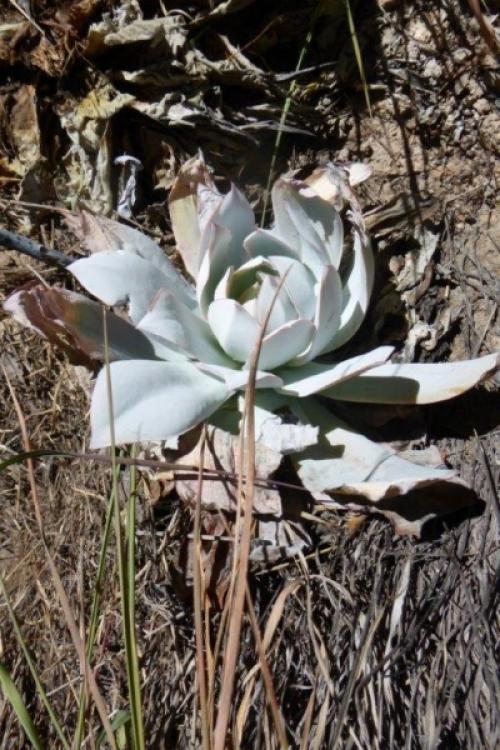
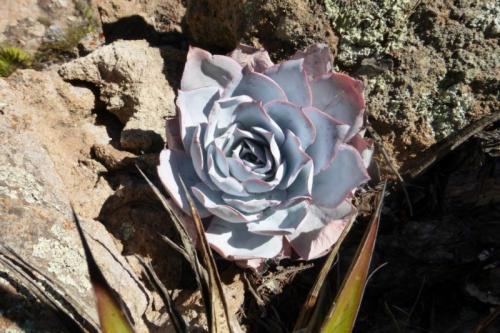
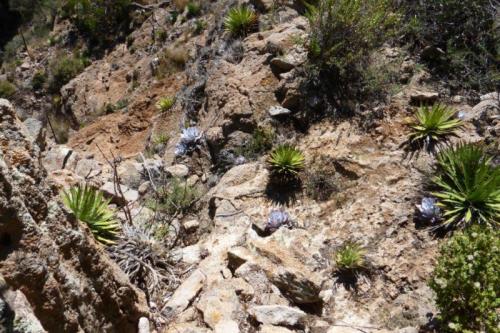
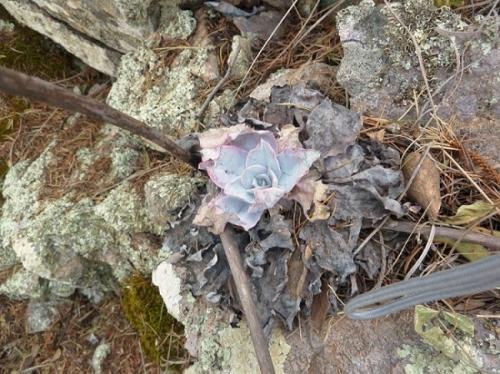
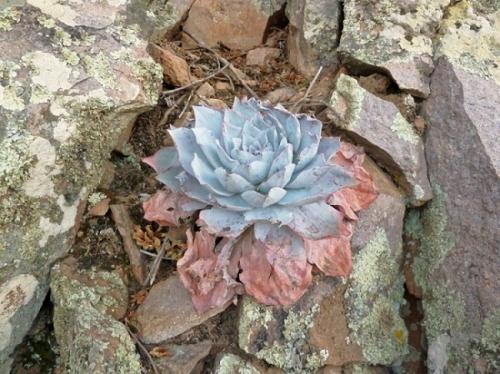
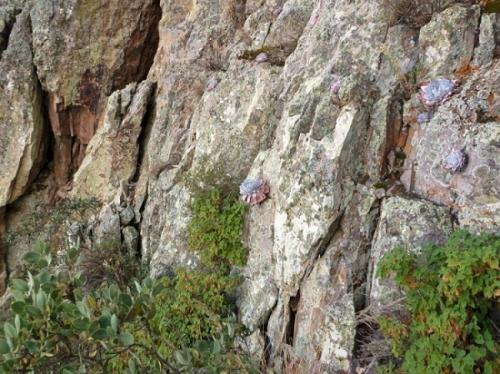
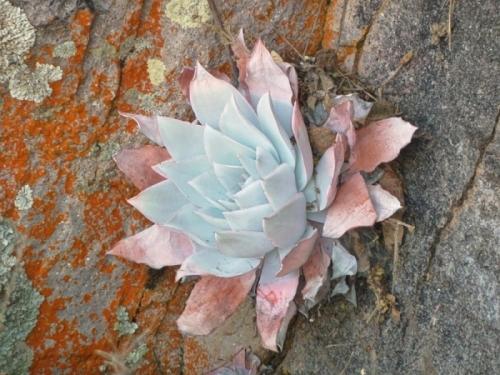
Sierra Chapultepec, Zacatecas, Mexico :
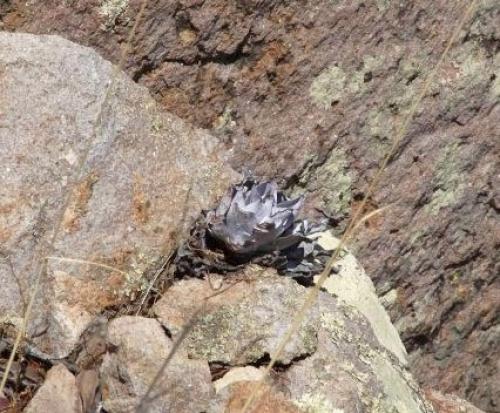
Plants in cultivation :


Photos Joop van Keppel
